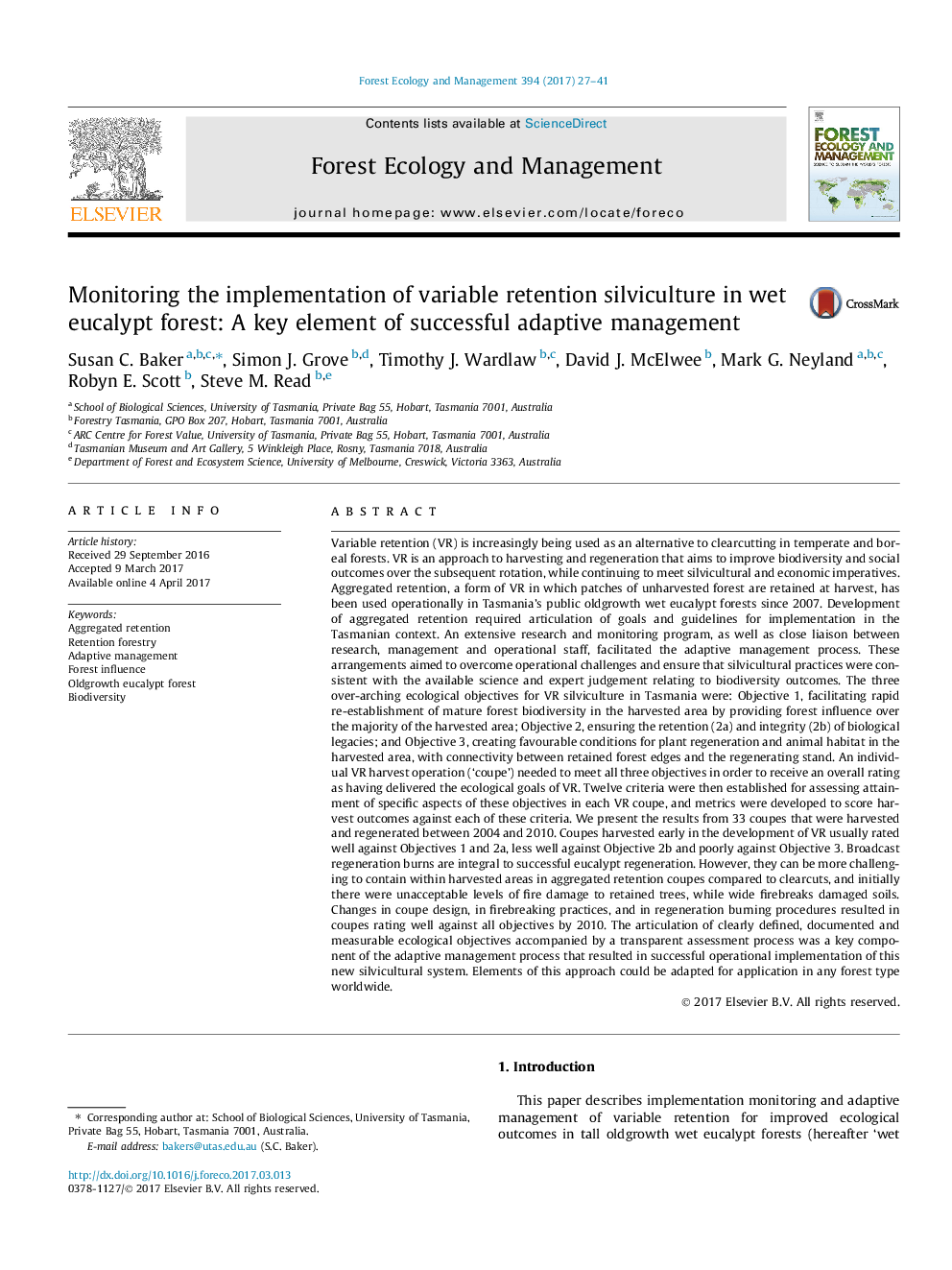| کد مقاله | کد نشریه | سال انتشار | مقاله انگلیسی | نسخه تمام متن |
|---|---|---|---|---|
| 4759447 | 1421364 | 2017 | 15 صفحه PDF | دانلود رایگان |
عنوان انگلیسی مقاله ISI
Monitoring the implementation of variable retention silviculture in wet eucalypt forest: A key element of successful adaptive management
ترجمه فارسی عنوان
نظارت بر اجرای جنگلداری حفظ متغیر در جنگل های مرجانی اقلالیت: عنصر کلیدی مدیریت سازگار با موفقیت
دانلود مقاله + سفارش ترجمه
دانلود مقاله ISI انگلیسی
رایگان برای ایرانیان
کلمات کلیدی
موضوعات مرتبط
علوم زیستی و بیوفناوری
علوم کشاورزی و بیولوژیک
بوم شناسی، تکامل، رفتار و سامانه شناسی
چکیده انگلیسی
Variable retention (VR) is increasingly being used as an alternative to clearcutting in temperate and boreal forests. VR is an approach to harvesting and regeneration that aims to improve biodiversity and social outcomes over the subsequent rotation, while continuing to meet silvicultural and economic imperatives. Aggregated retention, a form of VR in which patches of unharvested forest are retained at harvest, has been used operationally in Tasmania's public oldgrowth wet eucalypt forests since 2007. Development of aggregated retention required articulation of goals and guidelines for implementation in the Tasmanian context. An extensive research and monitoring program, as well as close liaison between research, management and operational staff, facilitated the adaptive management process. These arrangements aimed to overcome operational challenges and ensure that silvicultural practices were consistent with the available science and expert judgement relating to biodiversity outcomes. The three over-arching ecological objectives for VR silviculture in Tasmania were: Objective 1, facilitating rapid re-establishment of mature forest biodiversity in the harvested area by providing forest influence over the majority of the harvested area; Objective 2, ensuring the retention (2a) and integrity (2b) of biological legacies; and Objective 3, creating favourable conditions for plant regeneration and animal habitat in the harvested area, with connectivity between retained forest edges and the regenerating stand. An individual VR harvest operation ('coupe') needed to meet all three objectives in order to receive an overall rating as having delivered the ecological goals of VR. Twelve criteria were then established for assessing attainment of specific aspects of these objectives in each VR coupe, and metrics were developed to score harvest outcomes against each of these criteria. We present the results from 33 coupes that were harvested and regenerated between 2004 and 2010. Coupes harvested early in the development of VR usually rated well against Objectives 1 and 2a, less well against Objective 2b and poorly against Objective 3. Broadcast regeneration burns are integral to successful eucalypt regeneration. However, they can be more challenging to contain within harvested areas in aggregated retention coupes compared to clearcuts, and initially there were unacceptable levels of fire damage to retained trees, while wide firebreaks damaged soils. Changes in coupe design, in firebreaking practices, and in regeneration burning procedures resulted in coupes rating well against all objectives by 2010. The articulation of clearly defined, documented and measurable ecological objectives accompanied by a transparent assessment process was a key component of the adaptive management process that resulted in successful operational implementation of this new silvicultural system. Elements of this approach could be adapted for application in any forest type worldwide.
ناشر
Database: Elsevier - ScienceDirect (ساینس دایرکت)
Journal: Forest Ecology and Management - Volume 394, 15 June 2017, Pages 27-41
Journal: Forest Ecology and Management - Volume 394, 15 June 2017, Pages 27-41
نویسندگان
Susan C. Baker, Simon J. Grove, Timothy J. Wardlaw, David J. McElwee, Mark G. Neyland, Robyn E. Scott, Steve M. Read,
